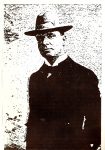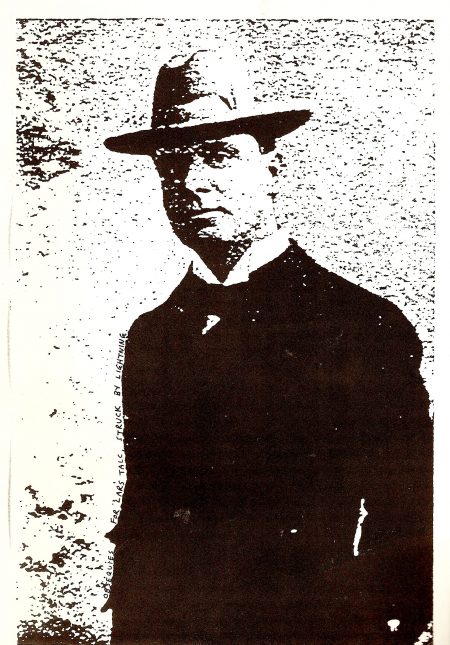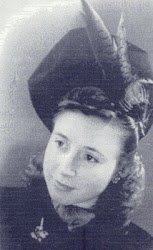
The seven members of the Electro-Magnetic Apparatus Museum Committee had written a stinking letter to Lars Talc. Over fourteen pages of officially-stamped notepaper, the signatories poured scorn on Talc’s ticket designs, called into question his ability to do the job as well as a half-trained ape, suggested that he had cajoled Chodd into commissioning him for the work through bribery, questioned his worth as a human being, and demanded that he repay, välittömästi and with interest, the monies he had been forwarded as an advance. The words inept, vain, dismal, loose, immoral, incompetent, corrupt, and abominable recurred with less regard for the felicities of style than with a determination to hammer home a point.
Minnie kept the letter hidden from Talc for some days. He was so pleased with his prize, which he fawned over while cradling it in his wrinkled hands, that she was reluctant to disturb his idyll. On the Thursday following the lightning-bolt, however, Talc answered a tapping at the door to find Chodd standing before him. Since last the Committee’s creature had visited, Talc’s temper had improved. Indeed, Chodd was taken aback by his reception, as Talc ushered him into the sitting-room and shoved a brimming tumbler of katajanmarjaviina into his hand.
“Welcome, Chodd!” yelled Lars Talc, with ridiculous bonhomie, “Welcome indeed! I have something very intriguing to show you, a prize I won from the scientifico-medical club. Wait there while I fetch it, and help yourself to the booze. I won’t be a minute.”
Talc was about to sweep dramatically from the room, but Chodd halted him.
“Wait!” he shouted, “We have more important matters to discuss than your footling prize. This is not a social visit. The Committee has sent me to collect its monies, with the application of rigour if necessary.”
“Rigour?”
“I have adjutants. They are waiting outside.”
“Adjutants?”
“Brutes. Armed with thumping implements.”
“Monies?”
“Crisp Finnish banknotes which I handed to you in a buff-coloured envelope not two months ago. Your advance.”
Minnie, who was lurking in the corner of the sitting-room, took the letter from her reticule and handed it to Talc, who read through all fourteen pages while Chodd drained and refilled his tumbler.
“Please wait a moment,” said Talc, when at last he had finished reading.
He stalked off and returned a few minutes later, clutching his songbook, and bid Minnie accompany him at the piano. It had long been his habit, when his nerves were frayed and his feelings convulsive, to sing one of his many self-composed pieces. Years before, he had had published, at his own expense, a compendium of one hundred and fourteen of his songs, madrigals, chants, sea shanties, lieder, serenades, cantatas, hymns, ballads, recitatives, and lullabies. The book also included the libretto of his operetta based on the once-popular novel A Woman Spurned by Ella Snowfury. One of the lasting regrets of Talc’s life was that this astonishing work had never been performed in public, although of course it has become a staple of the Finnish repertoire since his death.
“Number forty-nine, Minnie,” he announced. Minnie, who knew all the pieces by heart and had no need of sheet music, splayed her fingers over the keyboard.
“A few words of explanation before we begin,” said Talc, glaring at Chodd, who had retreated to the sideboard and was again refilling his tumbler. “Song number forty-nine is entitled A Viper On The Rug The instruction to the accompanist is to play fractiously. There are some difficult passages, and the interplay between voice and piano is at times dissonant. The rules of harmony are not only broken, Chodd, in this song they are swept away in a revolutionary manner which to my knowledge has never been accomplished by any other composer. Now sit down and pin back your nasty little flat purple ears!”
With a mighty crash on the keys, Minnie began. She played for three minutes before Talc joined her, rasping out the lyrics in guttural croaks. Although some of his song-texts were simple and straightforward, Talc often favoured lyrics constructed in a highly-wrought language, rich and allusive, peppered with wordplay shamelessly allowing him to display his superlative mastery of intricate verse-forms. This has caused his translators much grief.
Pond, who first attempted an English translation of the songbook, struggled for years before cutting his throat in a fit of despair. Shincramp and Wedge, working in partnership, got halfway through the book before the former discovered that the latter knew no Finnish. They had already published some of their translations in the Journal of Wintermuck Studies. When Wedge’s deceit was revealed, and their work was examined by scholars of merciless acuity, the pair became laughing stocks. Wedge, who had expected to be rumbled sooner or later, reacted with aplomb, and turned his hand to petty theft, lurking in ill-lit alleyways down by the docks. For Shincramp, however, the humiliation was too much to bear, and, like Pond, he perished by his own hand, hanging himself from the rafters of a log-cabin in the wild Canadian wastes.
From time to time, other scribblers have taken up the challenge of rendering Lars Talc’s songbook into English, but it is fair to say that the immense textual problems have, to date, defied truly inspired – or even competent – solutions. The best we can do is to use Birdhole’s edition, which gives literal prose translations. Her version of The Viper On The Rug reads as follows:
In my rooms of state, in which I prance, garbed in hideous robes, there lies a rug. It is tasselled. On Monday, after I had been fed slops, I stole into my rooms of state. Pins, tacks, nails. Where is my warming-pan? There is a viper on the rug, and my arms dangle limply. The planets spin. Bring me the tacks.
The text is repeated twice. As performed by Talc and Minnie, the song lasted for twenty minutes, during which time Chodd finished off the bottle of katajanmarjaviina, and opened another one which he found in the cabinet. He was a quarter of the way through this second bottle when the song clattered to an end, Talc wheezing and Minnie bashing the keys with terrible fractiousness. Chodd slurped from his tumbler.
“Now get out of my sight!” thundered Talc, hurling his songbook across the room.
“You wish me to call my adjutants?” asked Chodd.
“Pah!”
“So be it.”
Chodd, who could drink anyone under the table, walked steadily to the door, opened it, and called to his brutes. There were fourteen of them, but they entered in a whirling tangle as one mass of teeming violence. Chodd pointed to Talc.
“Set upon this man. Do not stint in your thumping.”
Before the adjutants got an inch closer to their prey, Minnie unleashed upon them a powerful spray of ig from a canister which she had concealed inside the piano stool. As the jet of foam hit them, each thug in turn was completely immobilised, as if turned to stone. Within seconds, wisps of turquoise vapour curled about their heads, and their skins took on an incandescent sheen. Chodd’s troop of hired muscle was transformed into a ghastly tableau, motionless and gleaming.
“Thank you, Minnie,” said Talc, taking the canister from her. “Rest assured, Chodd, that your little gang will suffer no lasting damage. Ig is potent, certainly, but not fatal. Oh, and the vapour gives off a disgusting pong after a while. You will only have to tolerate it for a week or two. Now, while Minnie summons a removal truck, perhaps you would be kind enough to assist me in parcelling up your thugs. There is a huge roll of greaseproof paper in the pantry.”









